Back
KINMA
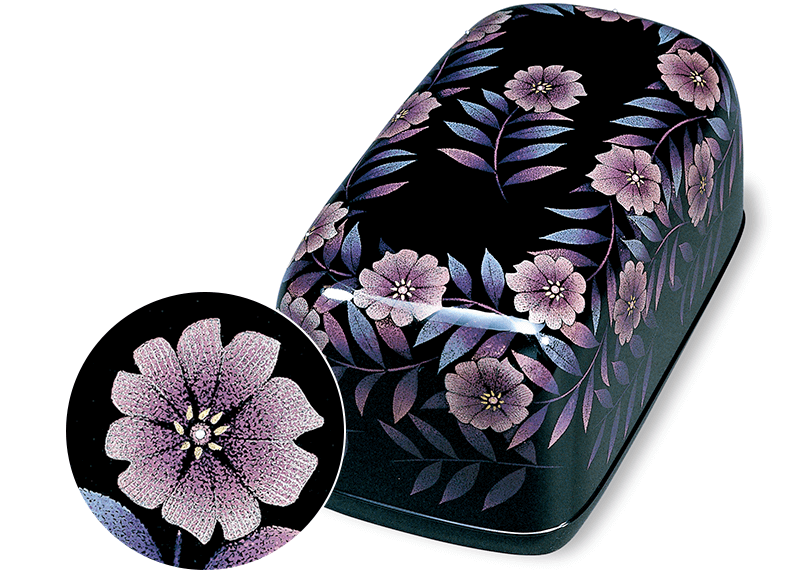
Description
There are three basic variations of kinma based on the method used for cutting the motifs: line cutting, dot cutting, and a combination of the two. All three types use a special carving blade known as a kinma ken. Originally, kinma only consisted of motifs made of incised lines. However, by combining a variety of colored lacquers and cutting techniques, the art has lent itself to increasingly complex designs.
Kinma is a decorative technique thought to have arrived in Japan from Southeast Asia. Motifs cut into the surface of a lacquer piece are filled with a contrasting colored lacquer and then burnished down to reveal the ground and the contrasting lacquer inlay. In some parts of Southeast Asia, the custom of chewing betel nuts and spices wrapped in betel leaves is known as “chien mahk,” and it is believed that the Japanese term kinma was taken from the lacquer containers for betel that were imported to Japan.
In the piece here, the complicated color expressions seen on the flower petals were created by inlaying a gradation of colored lacquer.
Process
-
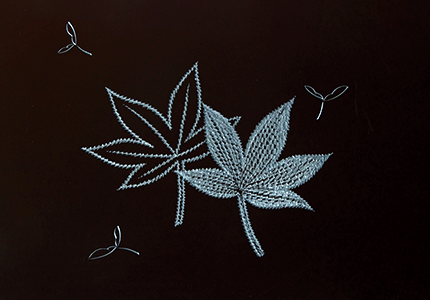 1.Motifs are cut into the surface of the piece.
1.Motifs are cut into the surface of the piece. -
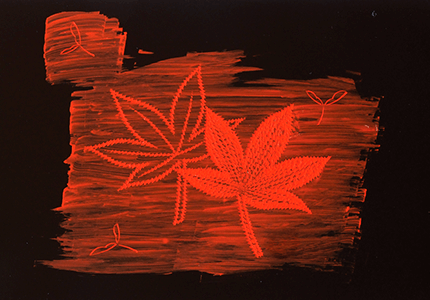 2.The incisions are filled with colored lacquer.
2.The incisions are filled with colored lacquer. -
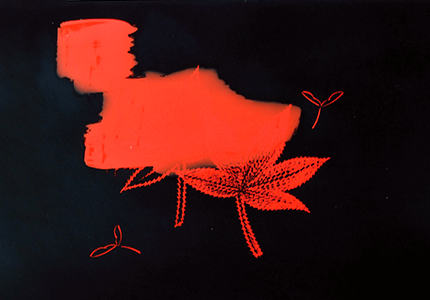 3.The colored motifs are polished down using charcoal.
3.The colored motifs are polished down using charcoal. -
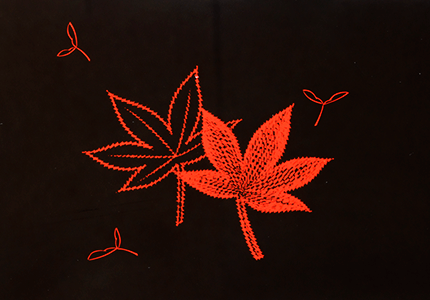 4.The piece is burnished with powdered deer antler and completed.
4.The piece is burnished with powdered deer antler and completed.
-
Reference: Nihon Kōgeikai Higashi Nihon Shibu (Japan Kōgei Association Eastern Branch), ed., Dentō kōgei-tte nani? – miru, shiru, tanoshimu gaido bukku (What Are Traditional Crafts? –A Guidebook to Seeing, Learning, and Enjoying). Unsodo, 2013.
